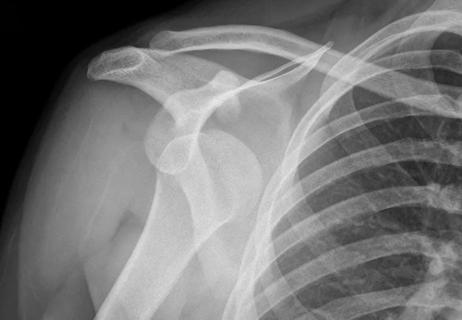Stretching and eliminating stresses on the joint is key to stopping the pain

A storage bin needs to return to its spot on the top shelf of your closet. No problem, right? It just weighs a few pounds. So you grab the bin by the handles, start to lift it over your head and — YOWZA! — a sharp pain stabs at your shoulder.
Advertisement
Cleveland Clinic is a non-profit academic medical center. Advertising on our site helps support our mission. We do not endorse non-Cleveland Clinic products or services. Policy
Consider that an unwelcome introduction to shoulder bursitis, a painful inflammation in the joint most often brought on by overuse or injury. The wear and tear of daily life can make this a chronic condition, too.
Now for the good news: You can reduce your chances of feeling this agony through a few minor adjustments to daily routines and some simple stretches.
Let’s learn how with physical therapist Kelly Kinsey, MSPT, AT.
No joint in your body offers more flexibility and range of motion than your shoulder. The anatomical setup qualifies as a marvel of engineering. Its complexity, however, leaves it vulnerable to damage.
Which brings us to the bursae.
These fluid-filled sacs act as a cushion within your shoulder. Bursae reduce rubbing and friction between the moving parts — tendons, muscle and bone — in the shoulder. “It’s protecting your other tissue,” says Kinsey.
It’s a tough job… and it can take a toll.
Overuse of the joint or keeping it in an awkward position for long periods (more on that later) can aggravate your bursae. That irritation leads to the swelling and inflammation that define bursitis.
“People can be in significant pain with it,” notes Kinsey.
The first step to calming your bursitis? Stop aggravating it. “Try to avoid the things that cause you pain,” says Kinsey. “That sounds easy enough, right? But it can require some real changes to how you do things.”
Advertisement
Here are three common causes of shoulder bursitis in your daily life — and how you might be able to resolve them.
Does your arm hurt when you get up in the morning? If so, it may be because of your sleeping position. “If you’re laying on your side with your arm extended under your pillow, that’s not good,” says Kinsey.
Leaving your arm in that position pinches your bursae and rotator cuff for hours, putting an unnecessary impingement and stress on your shoulder.
The solution: Try a new pillow. “Usually, if you want to put your arm under your pillow it’s because the pillow is too thin or too soft,” notes Kinsey. “Getting a new pillow that’s a little thicker will help you not want to do that.”
Leaning on your elbows for long periods compresses your shoulder, which is also a no-no for your shoulder health. (Examples include elbows on your desk at work or leaving your arm on the center console of your car when driving.)
“When you do this, you’re basically squishing the water balloon that is your bursa and aggravating it,” says Kinsey.
The solution: Reposition yourself. Move around a bit so you’re not leaning on your elbows for extended periods and overtaxing your shoulders. At work, maybe try a standing desk.
Sitting in a slouched position pulls your shoulder blades forward and can put the pinch on the bursae, creating the conditions for bursitis. (You may fall into this body alignment while tapping at a computer keyboard or scrolling through your cell phone.)
Poor posture also can strain your neck and back, leading to a whole network of overworked muscles.
The solution: Focus on sitting up straight. Review your desk setup to minimize the amount of time you spend looking at a downward angle. Also, get up and move around regularly to avoid getting stuck in one position.
Let’s start with this reality: You can’t really exercise or stretch a bursa sac. (Remember, it’s basically a cushion.) What you can do, though, is work the muscle and tendons surrounding the bursae to give it the space it needs.
“We start with freedom and looseness in our shoulders,” says Kinsey. “But our normal, everyday habits can tighten things up in a negative way. Stretching helps address that by loosening the shoulders up a bit and creating room for the bursae to operate efficiently.”
Here are three simple stretches to keep the joints in good working order.
The stretch targets your pectoral muscles and the front of your chest.
Advertisement
The stretch improves limb mobility and helps improve posture.
The stretch hits the back of your shoulders to improve flexibility.
Overusing your shoulder probably led to the bursitis. Continuing to tax your shoulder isn’t going to make the pain go away.
Take a break from activities that irritate your shoulder to let the joint heal, says Kinsey. A week of downtime should do the trick before introducing any stretching. Anti-inflammatory medications and icing also can help the healing process.
Advertisement
Anybody can get shoulder bursitis, but it’s more common among people in professions and sports where shoulder movement is a key part of the gig. Think painters and on-the-diamond ballplayers, for instance.
Shoulder bursitis typically shows up in combination with another should malady, such as a rotator cuff or bicep tendon issue. “Bursitis without any other symptoms is rare,” says Kinsey. “It’s usually involved with some other tissue being hurt as well.”
So if your aching joint doesn’t get better with rest, lifestyle changes and stretching, connect with your healthcare provider for a more thorough exam of the shoulder.
“If you’re having trouble lifting your arm,” says Kinsey, “it’s probably more severe than bursitis.”
Advertisement
Learn more about our editorial process.
Advertisement

Don’t ignore obvious warning signs of more serious shoulder issues

Here's how to loosen up those tight shoulder muscles

Sometimes, it does require surgery

The short answer from an orthopaedic surgeon

How to tell the difference

Plus, ways to keep your bones healthy and strong!

Bone health starts with proper nutrition, exercise and healthy lifestyle choices

Cramps can creep up if your shoes are too tight, you’re dehydrated or you have poor circulation

If you’re feeling short of breath, sleep can be tough — propping yourself up or sleeping on your side may help

If you fear the unknown or find yourself needing reassurance often, you may identify with this attachment style

If you’re looking to boost your gut health, it’s better to get fiber from whole foods